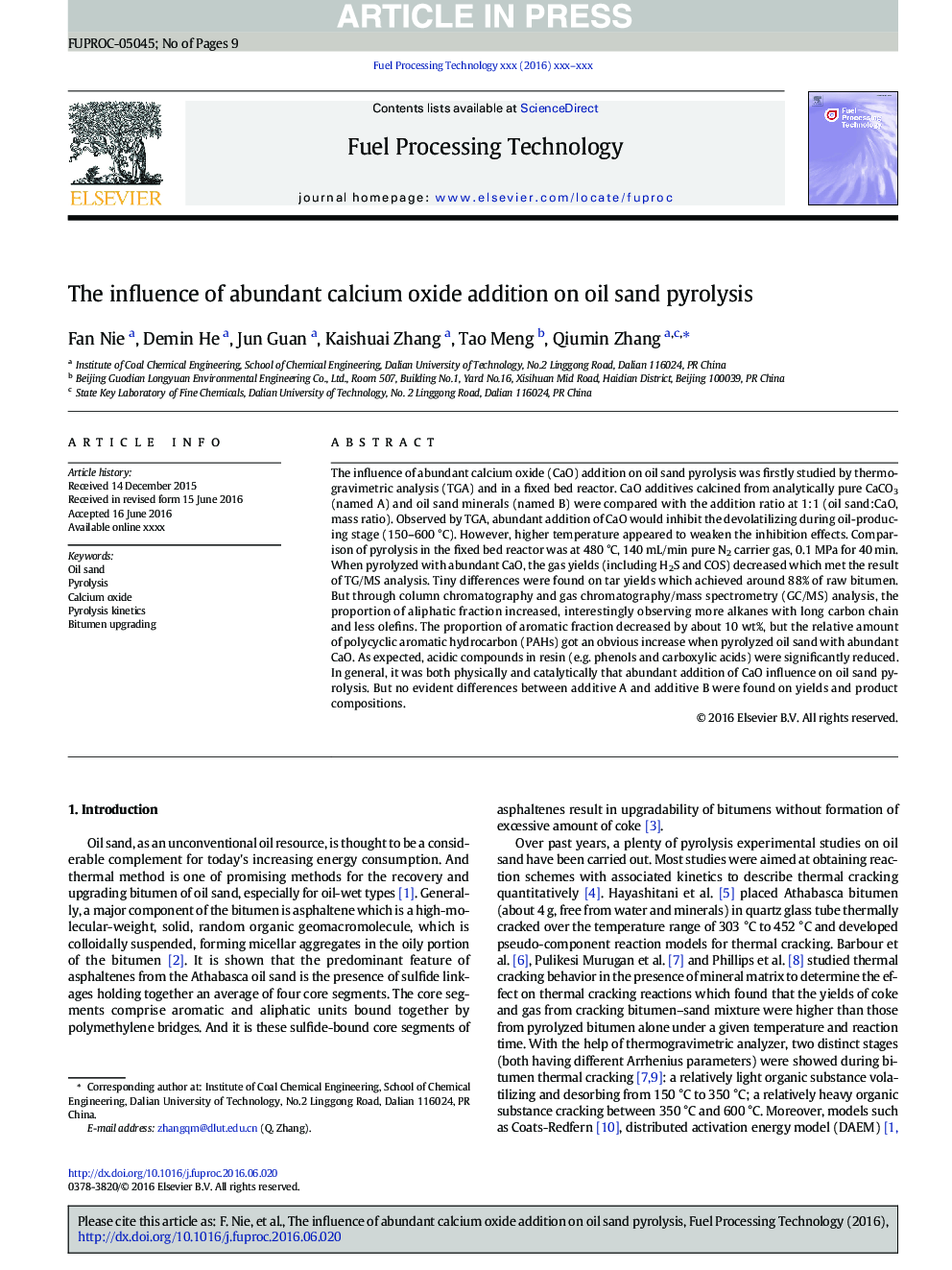| Article ID | Journal | Published Year | Pages | File Type |
|---|---|---|---|---|
| 4907154 | Fuel Processing Technology | 2017 | 9 Pages |
Abstract
The influence of abundant calcium oxide (CaO) addition on oil sand pyrolysis was firstly studied by thermogravimetric analysis (TGA) and in a fixed bed reactor. CaO additives calcined from analytically pure CaCO3 (named A) and oil sand minerals (named B) were compared with the addition ratio at 1:1 (oil sand:CaO, mass ratio). Observed by TGA, abundant addition of CaO would inhibit the devolatilizing during oil-producing stage (150-600 °C). However, higher temperature appeared to weaken the inhibition effects. Comparison of pyrolysis in the fixed bed reactor was at 480 °C, 140 mL/min pure N2 carrier gas, 0.1 MPa for 40 min. When pyrolyzed with abundant CaO, the gas yields (including H2S and COS) decreased which met the result of TG/MS analysis. Tiny differences were found on tar yields which achieved around 88% of raw bitumen. But through column chromatography and gas chromatography/mass spectrometry (GC/MS) analysis, the proportion of aliphatic fraction increased, interestingly observing more alkanes with long carbon chain and less olefins. The proportion of aromatic fraction decreased by about 10 wt%, but the relative amount of polycyclic aromatic hydrocarbon (PAHs) got an obvious increase when pyrolyzed oil sand with abundant CaO. As expected, acidic compounds in resin (e.g. phenols and carboxylic acids) were significantly reduced. In general, it was both physically and catalytically that abundant addition of CaO influence on oil sand pyrolysis. But no evident differences between additive A and additive B were found on yields and product compositions.
Related Topics
Physical Sciences and Engineering
Chemical Engineering
Chemical Engineering (General)
Authors
Fan Nie, Demin He, Jun Guan, Kaishuai Zhang, Tao Meng, Qiumin Zhang,
